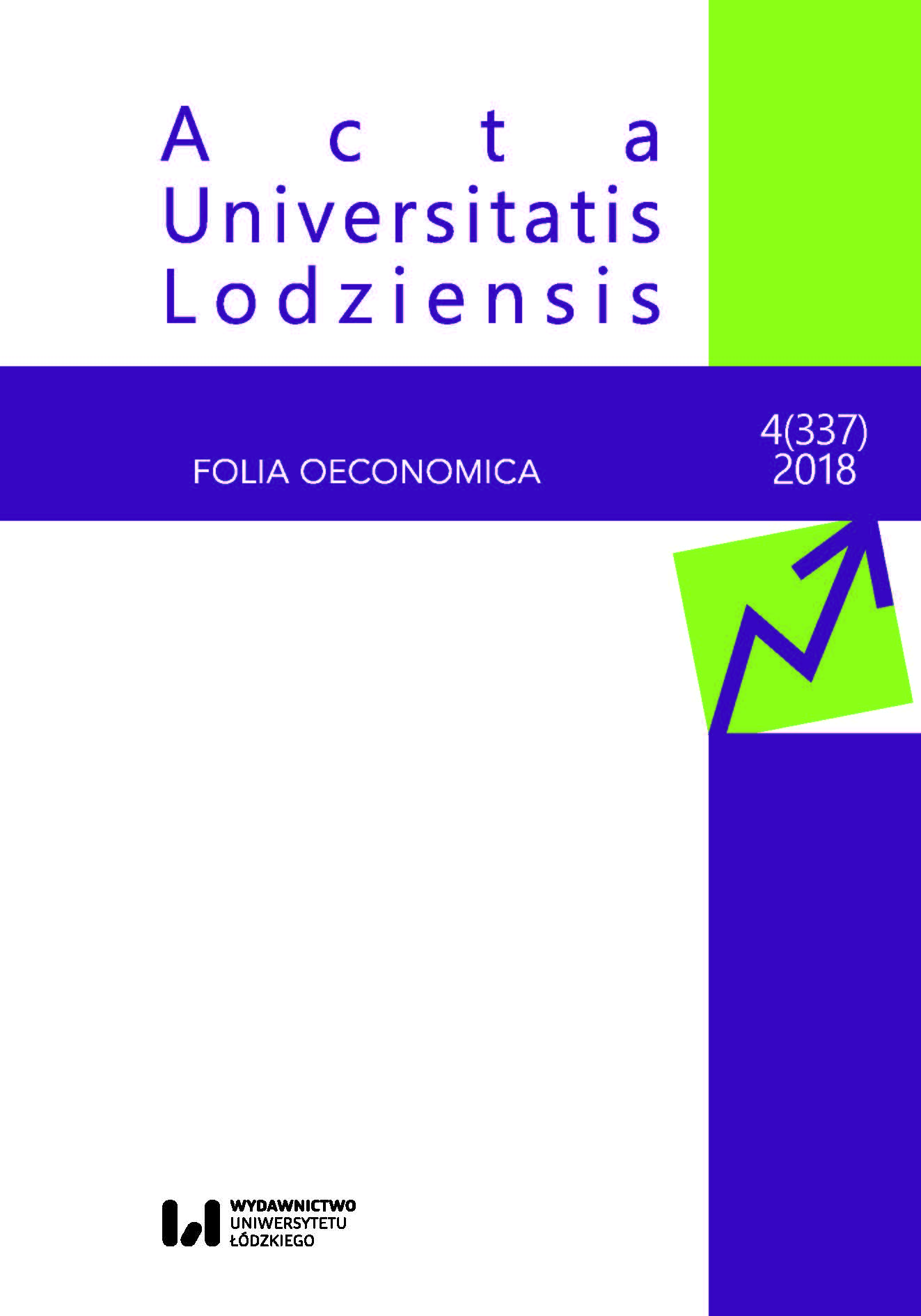Spatio‑temporal Modelling of the Influence of the Number of Business Entities in Selected Urban Centres on Unemployment in the Kujawsko‑Pomorskie Voivodeship
Spatio‑temporal Modelling of the Influence of the Number of Business Entities in Selected Urban Centres on Unemployment in the Kujawsko‑Pomorskie Voivodeship
Author(s): Elżbieta Szulc, Mateusz JankiewiczSubject(s): Human Resources in Economy
Published by: Wydawnictwo Uniwersytetu Łódzkiego
Keywords: business entities; unemployment; labour market; spatial and spatio‑temporal trends; spatial autocorrelation; podmioty gospodarcze; bezrobocie; rynek pracy; trend przestrzenny i przestrzenno‑czasowy
Summary/Abstract: The paper presents the analysis of the spatial and spatio‑temporal tendencies and dependence in matters related to the situation in the labour market of the Kujawsko‑Pomorskie Voivodeship across municipalities in the period of 2004–2015. The aim of the investigation is to verify whether, in the presence of the dependence, investing (through a growing number of enterprises) in the development of selected urban centres with a high level of unemployment can significantly reduce the unemployment rate in the whole province. The assessment of the situation in the labour market for each of the municipalities is made with the use of two characteristics, i.e. the share of registered unemployed persons in the number of the working age population and the number of business entities per 10,000 working age population. From the methodological point of view, the values of the variables are treated as realisations of spatial and spatio‑temporal stochastic processes. The spatial and spatio‑temporal tendencies and dependence were investigated using the concept of spatial and spatio‑temporal trends and spatial autocorrelation. Additionally, spatial autoregressive models for individual processes and spatial models of the dependence of unemployment on the number of business entities, for each year of the investigated period, were estimated and verified. The specification of spatio‑temporal models of unemployment, including the model which takes into consideration spatial shifts and time lags of the dependence, was carried out. The models were used for simulating the level of unemployment in the province assuming some growth in the number of business entities in selected urban centres. // Artykuł prezentuje analizę przestrzennych i czasowych tendencji i zależności dotyczących sytuacji na rynku pracy w województwie kujawsko‑pomorskim w układzie gmin w okresie 2004–2015. Celem badania jest sprawdzenie, czy – przy istniejących zależnościach – wzrost aktywności działalności gospodarczej przez zwiększenie liczby podmiotów gospodarczych w wybranych ośrodkach miejskich województwa, w których poziom bezrobocia jest wysoki, może obniżyć bezrobocie w całym województwie. Sytuacja na rynku pracy w poszczególnych gminach została oceniona na podstawie dwóch zmiennych, tj. udziału bezrobotnych zarejestrowanych w liczbie ludności w wieku produkcyjnym oraz liczby podmiotów gospodarczych na 10 tys. mieszkańców w wieku produkcyjnym. Z metodologicznego punktu widzenia wartości tych zmiennych traktuje się jako realizacje przestrzennych i przestrzenno‑czasowych procesów stochastycznych. Przestrzenne i przestrzenno‑czasowe tendencje i zależności zostały zbadane przy wykorzystaniu koncepcji trendu przestrzennego i przestrzenno‑czasowego oraz autokorelacji przestrzennej. Dodatkowo zostały oszacowane i zweryfikowane przestrzenne modele autoregresyjne poszczególnych procesów, a także przestrzenne modele zależności bezrobocia od liczby podmiotów gospodarczych w poszczególnych latach badanego okresu. Dokonano również specyfikacji przestrzenno‑czasowych modeli bezrobocia, w tym modelu uwzględniającego przesunięcia przestrzenne i opóźnienia czasowe rozważanej zależności. Modele te wykorzystano następnie do symulacji poziomu bezrobocia w województwie przy założeniu wzrostu liczby podmiotów gospodarczych w ustalonych ośrodkach miejskich.
Journal: Acta Universitatis Lodziensis. Folia Oeconomica
- Issue Year: 4/2018
- Issue No: 337
- Page Range: 21-37
- Page Count: 17
- Language: English

